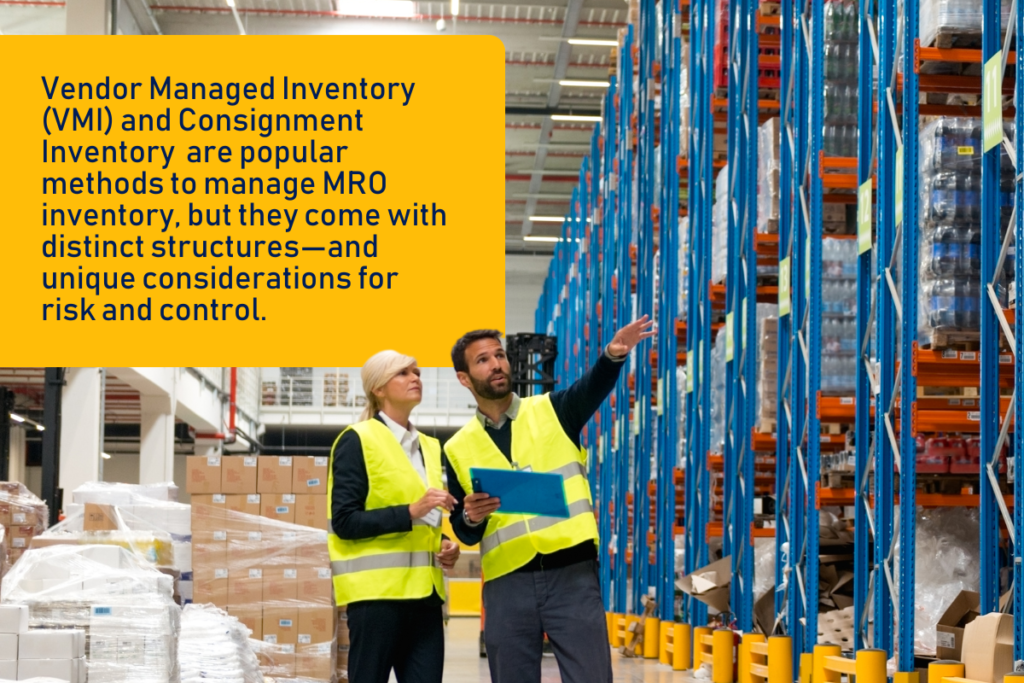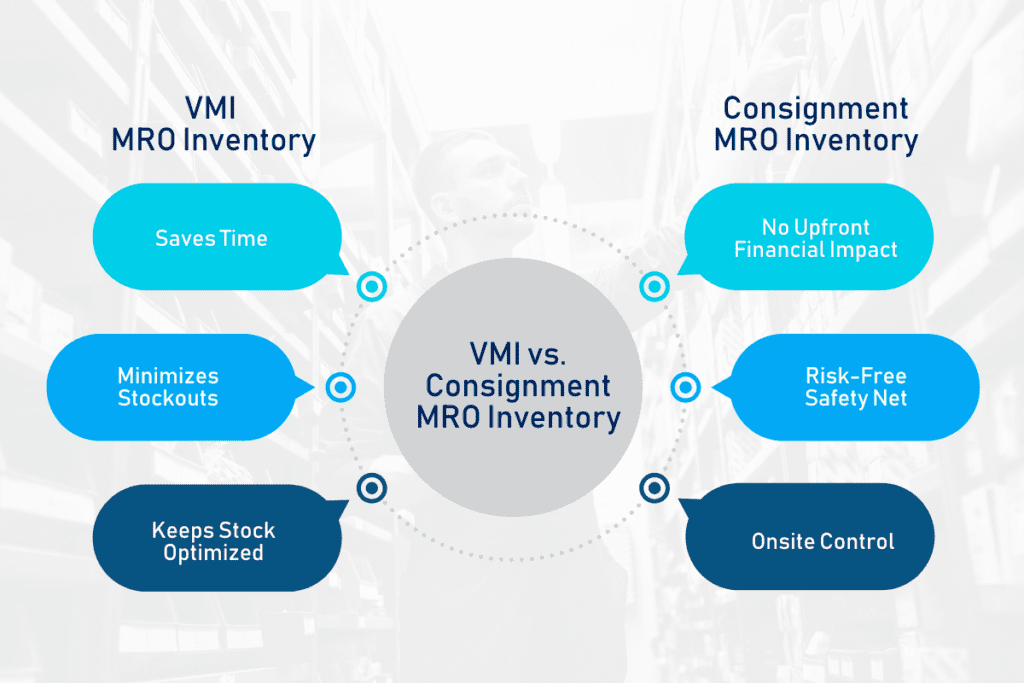Inventory Insights:
Clearing Up the Confusion Between VMI and Consignment!
I’ve noticed some recurring confusion recently around Vendor Managed Inventory (VMI) and Consignment Inventory.
Both are popular methods to manage MRO (Maintenance, Repair, and Operations) inventory, but they come with distinct structures—and unique considerations for risk and control. Let’s break down how each works and what to watch out for!

Vendor Managed Inventory (VMI): Supplier Holds the Goods, But Who’s Really in Control?
Under a VMI agreement, the vendor holds and manages the inventory, monitoring stock levels and replenishing as needed based on real-time usage data. With VMI, the supplier aims to keep you stocked without you having to lift a finger. Here’s why VMI can be a great fit:
• Saves Time – Suppliers handle restocking, freeing up your team for other tasks.
• Minimizes Stockouts – With close tracking, critical parts are (theoretically) always there when you need them.
• Keeps Stock Optimized – VMI aligns stock with actual usage, reducing unnecessary inventory buildup.
The main caveat with VMI is control: since the vendor is holding the inventory, you must rely on them to meet agreed stock levels. In practice, most suppliers are reliable, but we’ve seen situations where agreed-upon critical spares weren’t available when spot-checked. To counter this, “trust but verify” is crucial—schedule regular checks with internal teams or bring in a third party, like RIGSERV, to audit stock levels. This approach ensures that you’re not caught short-handed when a critical part is needed most.
Consignment Inventory: You Hold the Stock, But Only Pay When You Use It
In a consignment setup, inventory is stored onsite, giving you physical control of the stock, but you only pay when you actually use it. This can be ideal for high-value or rarely-used items. Here’s why consignment inventory can be a smart choice:
• No Upfront Financial Impact – You avoid immediate cash outlays, freeing up capital for other needs.
• Risk-Free Safety Net – Critical parts are readily available without full ownership.
• Onsite Control – You maintain access and physical oversight of the parts, unlike with VMI.
One essential consideration with consignment is control over tax implications. In some jurisdictions, consignment inventory may be subject to specific tax treatment, depending on factors like ownership, location, and inventory valuation. It’s wise to consult with tax experts or your finance team to clarify any potential tax liabilities related to consignment stock and factor this into your cost-benefit analysis.

Choosing the Right Approach: Balancing Risk, Control, and Financial Impact
When considering VMI vs. consignment, think about your needs for risk management, control, and cost structure:
VMI works best for frequently used, high-demand items where vendor-managed restocking is practical—just be sure to verify stock levels periodically.
Consignment is ideal for high-value, low-usage parts where you want inventory on hand without tying up cash—just make sure to consider any tax implications.
For many MRO operations, a combination of VMI and consignment provides a balanced approach, allowing flexibility and control for different part types. By selecting the right method for each type of inventory and establishing checks, you can ensure your MRO strategy is efficient, resilient, and financially optimized.



